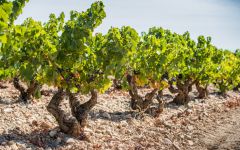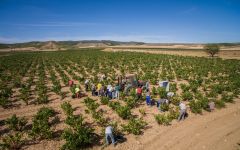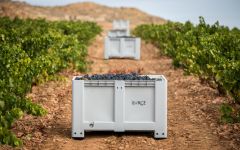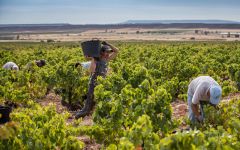Bodegas y Vinedos Ilurce Rio Madre Rose 2014
-
Robert
Parker


Product Details
Your Rating
Somm Note
Winemaker Notes
Professional Ratings
-
Robert Parker's Wine Advocate
A moderately sized winery of 148 acres of vines founded in 1940, the star of the three wines I tasted under $25 is their $10 2014 Rio Madre Rosé made from 100% Graciano. This is a killer Rosé with loads of kir cocktail, strawberry notes, a surprising dark color and is dry, fragrant and spicy. This is a delicious Rosé and capable of lasting another year or so.
Other Vintages
2022-
James
Suckling
-
James
Suckling
-
Jeb
Dunnuck
-
Wine
Spectator








Located in the heart of Rioja Baja in the town of Alfaro, Bodegas Ilurce is owned and operated by the fourth generation of the Escudero family. The family has grown grapes in Rioja Baja since 1940, and the current generation takes advantage of a wealth of 60Ha. of vineyards that are planted in alluvial soils on the slopes of the Monte Yerga. The vines range from century old head trained Garnacha to high density plantings of Graciano and Tempranillo planted in alluvial, limestone heavy soils with a high abundance of stones. Located at high altitudes, 2000 ft. (600m) above sea level, the vineyards take advantage of very cold winters and nights, combined with warm summers – perfect conditions for the maturation of Graciano, perhaps the estate’s most important treasure.
Jorge Ordóñez partnered with Bodegas Ilurce after he set a goal to produce and import a 100% Graciano wine. Graciano, a variety is most often used for blending in Rioja to improve Tempranillo, is heavily planted in Rioja Baja, as it is very challenging to ripen this grape in cooler Rioja Alta. Due to its long vegetative cycle and slow maturation, Graciano, like Garnacha, requires a warmer climate to ripen. For that reason, Ordóñez and his team travelled to Rioja Baja to find a producer to partner with. At the time, the few monovarietal Graciano wines were either very expensive or very low quality, so Jorge sought to produce a high quality, price accessible Graciano for the American market. Jorge achieved this with Rio Madre Graciano, a wine that has been a blockbuster success in the United States, as it represents incredible quality for an entry level Rioja.

Whether it’s playful and fun or savory and serious, most rosé today is not your grandmother’s White Zinfandel, though that category remains strong. Pink wine has recently become quite trendy, and this time around it’s commonly quite dry. Since the pigment in red wines comes from keeping fermenting juice in contact with the grape skins for an extended period, it follows that a pink wine can be made using just a brief period of skin contact—usually just a couple of days. The resulting color depends on grape variety and winemaking style, ranging from pale salmon to deep magenta.

Highly regarded for distinctive and age-worthy red wines, Rioja is Spain’s most celebrated wine region. Made up of three different sub-regions of varying elevation: Rioja Alta, Rioja Alavesa and Rioja Oriental. Wines are typically a blend of fruit from all three, although specific sub-region (zonas), village (municipios) and vineyard (viñedo singular) wines can now be labeled. Rioja Alta, at the highest elevation, is considered to be the source of the brightest, most elegant fruit, while grapes from the warmer and drier Rioja Oriental produce wines with deep color and higher alcohol, which can add great body and richness to a blend.
Fresh and fruity Rioja wines labeled, Joven, (meaning young) see minimal aging before release, but more serious Rioja wines undergo multiple years in oak. Crianza and Reserva styles are aged for one year in oak, and Gran Reserva at least two, but in practice this maturation period is often quite a bit longer—up to about fifteen years.
Tempranillo provides the backbone of Rioja red wines, adding complex notes of red and black fruit, leather, toast and tobacco, while Garnacha supplies body. In smaller percentages, Graciano and Mazuelo (Carignan) often serve as “seasoning” with additional flavors and aromas. These same varieties are responsible for flavorful dry rosés.
White wines, typically balancing freshness with complexity, are made mostly from crisp, fresh Viura. Some whites are blends of Viura with aromatic Malvasia, and then barrel fermented and aged to make a more ample, richer style of white.
